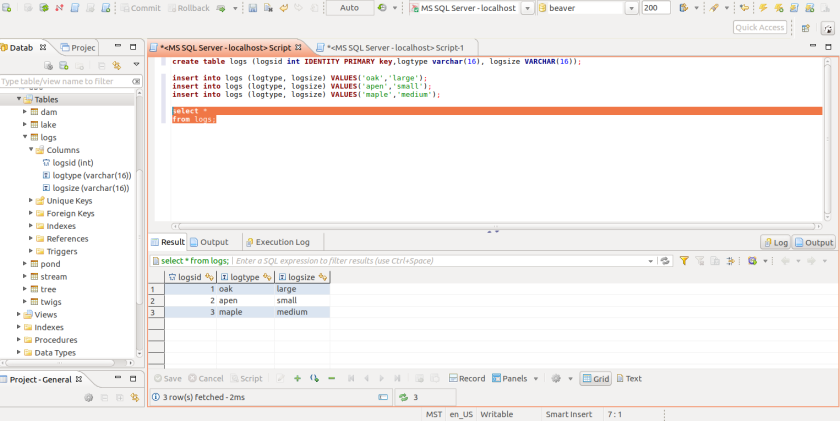Applies to: SQL Server 2016 (13.x) and later Azure SQL Database Azure SQL Managed Instance Azure Synapse Analytics Parallel Data Warehouse
DBeaver: A Universal Database Tool. It is a free multi-platform database tool for developers, SQL programmers, database administrators and analysts. Click on the DBeaver icon (either in your Launchpad or the Applications folder) to launch the DBeaver application. Launch the New Connection Wizard If this is the first time you've launched DBeaver, you'll probably be prompted with the Create new connection dialog. Expand the SQL Server node, select jTDS driver, and click Next. SQL Server on Azure Virtual Machines vs. Switch to SQL Server on Azure Virtual Machines and get better performance and price-performance than other cloud providers. Azure SQL Virtual Machines meet your mission-critical requirements and is up to 3.4 times faster and 87 percent cheaper than Amazon Web Services. Read the report.
Dbeaver Azure Sql Server Connection
DBeaver is a free and open source universal database management tool for developers and database administrators. With DBeaver, you are able to manipulate your data like in a regular spreadsheet, create analytical reports based on records from different data storage, and export information in an appropriate format. For advanced database users, DBeaver suggests a powerful SQL-editor, plenty of.
This article describes how to add new columns to a table in SQL Server by using SQL Server Management Studio or Transact-SQL.
Before You Begin
Limitations and Restrictions
Using the ALTER TABLE statement to add columns to a table automatically adds those columns to the end of the table. If you want the columns in a specific order in the table, use SQL Server Management Studio. However, note that this is not a database design best practice. Best practice is to specify the order in which the columns are returned at the application and query level. You should not rely on the use of SELECT * to return all columns in an expected order based on the order in which they are defined in the table. Always specify the columns by name in your queries and applications in the order in which you would like them to appear.

Security
Dbeaver Azure Sql Server Express
Permissions
Requires ALTER permission on the table.
Using SQL Server Management Studio
Dbeaver Azure Sql Server
To insert columns into a table with Table Designer
In Object Explorer, right-click the table to which you want to add columns and choose Design.
Click in the first blank cell in the Column Name column.
Type the column name in the cell. The column name is a required value.
Press the TAB key to go to the Data Type cell and select a data type from the dropdown.
This is a required value, and will be assigned the default value if you don't choose one.
Note
You can change the default value in the Options dialog box under Database Tools.
Continue to define any other column properties in the Column Properties tab.
Note
The default values for your column properties are added when you create a new column, but you can change them in the Column Properties tab.
When you are finished adding columns, from the File menu, choose Savetable name.
Using Transact-SQL

To insert columns into a table

The following example adds two columns to the table dbo.doc_exa.
For more information, see ALTER TABLE (Transact-SQL)
